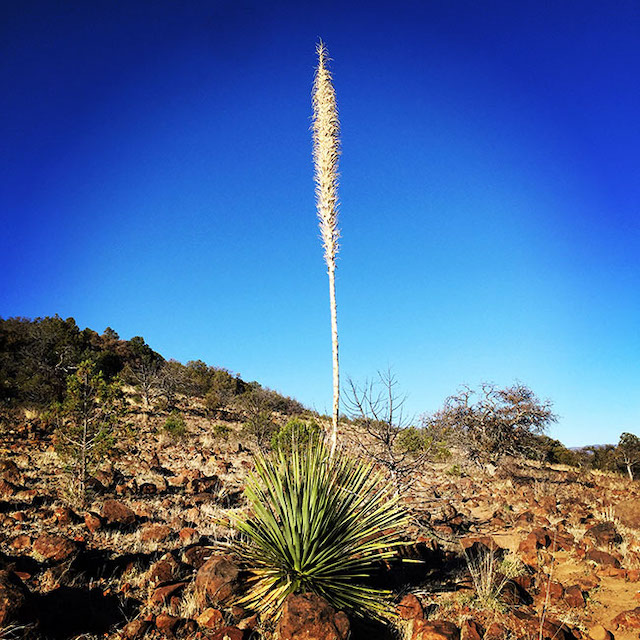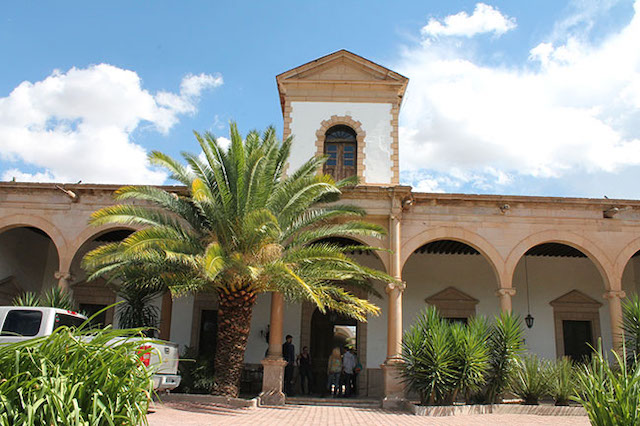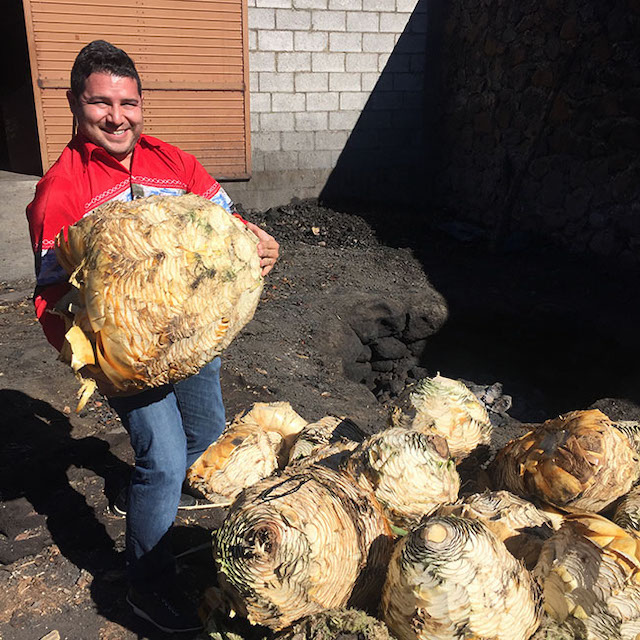Ricardo Pico has a thing for sotol, the regional spirit distilled in northern Mexico. Born and raised in Chihuahua and educated in Texas, Pico works as a brand ambassador for one of the bigger sotol companies (Sotol Hacienda) but he’s also collaborating with historians and anthropologists to document sotol’s long and dangerous past. He provided us with some little-known facts (and legends) about the spirit he calls “the crazy, uncomfortable brother of the agave family.”
1. It’s not actually agave
Though dasylirion, the genus of desert spoon plant used to make sotol, was first classified as an agave by John Hutchinson in 1934, it took another sixty years for an American Ph.D. student named David Bogler to conduct DNA tests that revealed it should properly be classed in the Nolinaceae family. Sotol takes its name from the Nahuatl word “Tzotolin,” meaning “palm with long and thin leaves.”
“It looks like an explosion of lances,” Pico says. Like agave, the sotol plant has a heart, or piña, that is cooked, but its leaves are waxy and don’t produce sap. Dasylirion grows wild in desert regions, requiring up to 20 years to mature, and there are 16 different species and 5 varietals used to make sotol.
2. It officially comes from three states in northern Mexico … but is produced as far south as Oaxaca
Sotol has its deepest cultural roots in Chihuahua, but the official denomination of origin extends to include the neighboring states of Coahuila and Durango. However, dasylirion grows as far north as Texas, Arizona and New Mexico and as far south as Oaxaca, where one sotolero distills it under the name “cucharilla,” or little spoon (the base of the dasylirion leaf is spoon-shaped).

3. It strongly captures its terroir, from desert to forest
“It’s one of the most transparent plants out there, because it gives you what it feeds on,” Pico says. He adds that forest-grown sotols tend to be pinier, with notes of mint and eucalyptus, while desert ones have mineral, leather and earthy notes.
4. It dates back to pre-Columbian times
Sources for sotol’s history are sketchy, but Pico is working with Jesús Vargas, a historian at the Universidad Autónoma de Ciudad Juarez, to piece it together. According to Vargas, indigenous peoples drank a beverage made from cooked and fermented sotol hearts during their religious ceremonies and would later eat the cooked piñas as food. Local legend (not science) promises the drink has medicinal uses as well, possessing the power to heal anything from diabetes to digestive problems. Even in modern-day Ciudad Juarez, you can find “chuchos,” shots of sotol infused with chuchupaxtle root, which natives used as an anesthetic during surgeries, Pico says.
5. For most of the 20th century, sotol producers were persecuted
Sotol country also happens to be the cradle of the Mexican revolution, whose first shots were fired in the Chihuahua municipality of Coyame de Sotol in 1910. Sotol was long considered “the spirit of the peasants,” as the Mexican elite preferred European liquors like cognac. “They thought that sotol was a moonshine for lower-grade people, whatever that meant,” Pico says.
In the ’20s and ’30s, sotoleros were persecuted, sometimes violently, by a government that claimed to be enforcing anti-booze laws but was actually just protecting the economic interests of rival rum, brandy and tequila producers, Vargas argues. If cops stumbled upon a clandestine vinata (as sotol distilleries are called), they would train their machine guns on the equipment, riddling the tanks and stills with bullets to ensure they couldn’t be used again. “Some sotoleros got arrested, some went to jail,” Pico says, and sotol production was pushed ever farther underground. It wasn’t until the 1990s that the first permits were issued for the legal production of sotol.

6. It’s often infused with fruits, nuts and spices….
Sotol “curados,” flavored with raisins, cinnamon or pecans, are traditionally sipped after dinner, like a liqueur.
7. Or even with snake venom….
At his vinata in the village of Aldama, Gerardo Ruelas keeps a huge jug of sotol on the counter with a whole rattlesnake curled up inside, but regular bottles of his Sotol Ruelas have just a hunk of snake meat floating in the bottom. “He has a bunch of snakes at his vinata,” Pico explains. “He takes the snake venom out of the snake and puts it in the sotol.” Some believe the venom has healing powers.
8. And sometimes a chunk of raw beef is involved
Just as some mezcal producers add a raw chicken breast to their stills to produce pechuga mezcal, at least one sotolero does a similar distillation, only with beef. “In poor villages in Oaxaca, they might only have one chicken for the whole village, so everyone would get a small piece through the beverage,” Pico explains. But Northern Mexico is ranch country, so one producer subs the bird for spiced beef in a style he calls carney. “It adds a whole layer of flavor,” Pico says. “You can taste the beef in there, and it closes with the flavor of the spices.”

9. The plants — and producers — are vulnerable
Aside from their long maturation time, wild sotol plants are vulnerable to being eaten by rodents. They also have a more “primitive” reproduction process, Pico says, since they don’t shoot clones like agaves do, relying instead on the wind to cross-pollinate male and female plants. He also notes a danger from poachers who take advantage of rural sotoleros by paying unfairly low prices. Pico hopes the industry can develop using sustainable practices that protect both plant and producer.
“These are humble, hardworking people doing this in the middle of nowhere,” Pico says. “They’re families with children, making this world-class spirit. It’s only fair that they be able to make a living.”





